AUDJPY forex Analysis
For a long time now the AUDJPY currency pair has been my market sentiment guide. If the AUDJPY is bullish, the general consensus appears to be the global equities markets are bullish too.
Back in December 2019, the AUDJPY reached a high and then declined into the February 2020 COVID-19 sell-off. In hindsight, this was a great indicator that all was not well within the financial markets. Some market commentators would have been looking at this decline as a sign of global economic output reduction and would have been hinting the Risk-Off trades would have been a good idea, but there was no way you could have had the foresight to see a global pandemic around the corner.
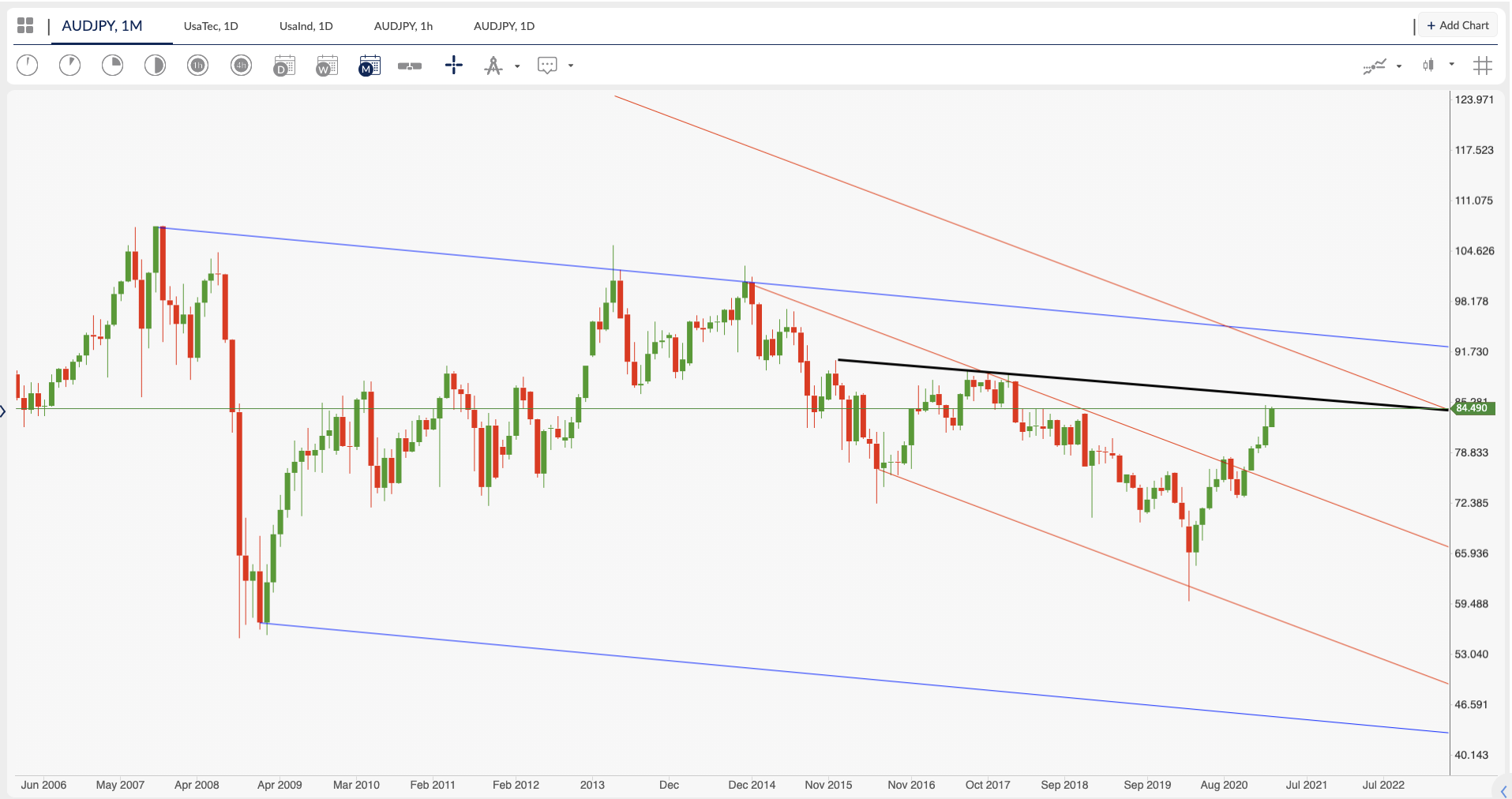

From the March 2020 bottom in the markets, the AUDJPY like most Risk On/Off assets has been rising and a year after the coronavirus brought world supply chains to a halt, we have the currency pair trading at levels previously seen in 2018.
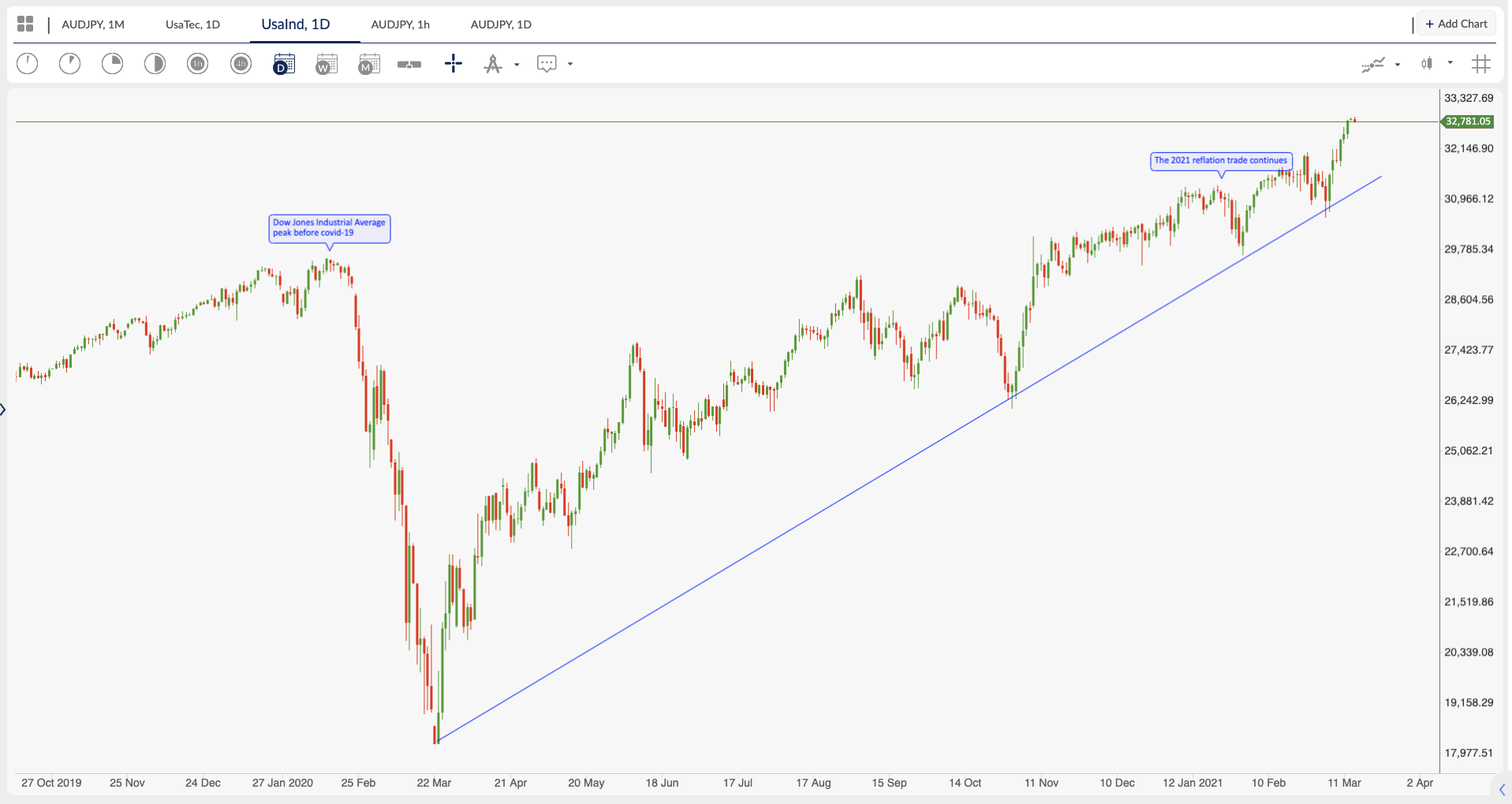

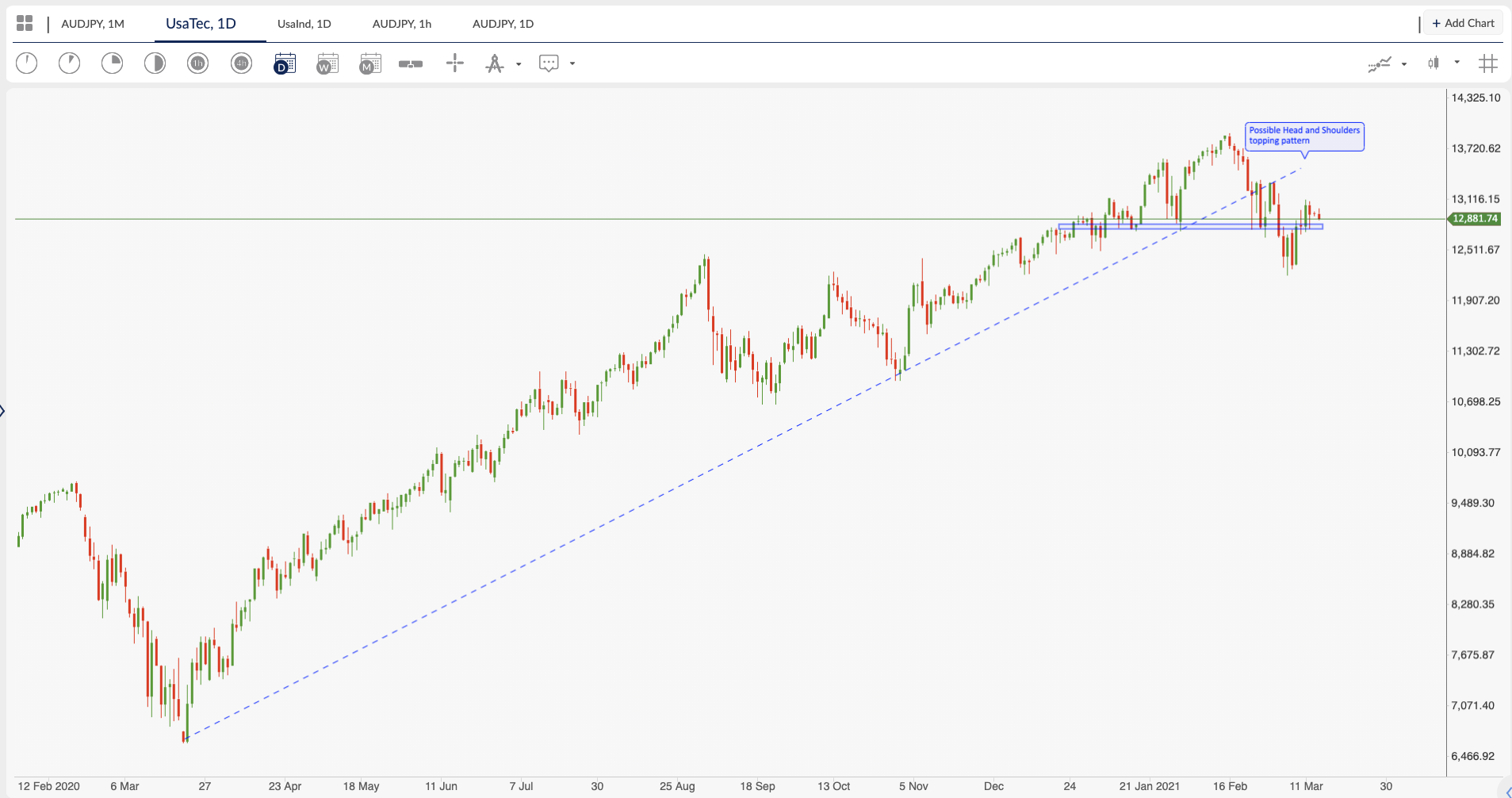

The Dow Jones Industrial Average (UsaInd) was the first of the US major indices to peak in 2019/2020 and the Nasdaq (UsaTec) was the clear favourite to reach new all-time highs in the stay-at-home bounce back. We are currently at a place where things are starting to look a little disconnected and the markets are becoming more sensitive to inflationary pressures and central bank monetary policies.
Last Friday the UsaInd reached all-time highs and at the open of this week, it gapped slightly higher. One would expect this trend to continue as the USA looks to the US Treasury and fiscal policies to add more US dollars into the economic system through the stimulus packages. So far, the emphasis has been on mitigating the economic shutdowns but now more needs to be done to put money into infrastructure and new policies that will generate economic prosperity into the future, so legislators will no-doubt find more money to aid this.
The UsaTec benefitted from the shift from going to work to staying home, with Facebook, Netflix, Amazon, Zoom, Twitter, etc. enabling the new norm. As economies and cities open up again, the consensus recently is that there is a rotation out of these stay-at-home stocks into other areas of the economy, especially those that would benefit from the reflationary policies that governments need to enact to get the global supply chains running friction-free and industries producing again. Industrials, materials, and energy have all seen outsized gains as inflationary pressures as expressed through sovereign yield curves hint at higher inflationary pressures to come.
Australia benefits when there is a low US dollar environment and they can export their commodities to the likes of China. Looking at the overall price action of the Australian dollar versus the Japanese yen, we see for several decades a decline in value until it based during the mid-1990s. The Great Financial Crash which gutted the world was nothing to the AUDJPY compared with the declines for AUDJPY witnessed during the mid-1970s and 1980s, and the last 14 years or so have been mildly bearish with a high watermark being the 2007 highs. The AUDJPY has been pushing higher as I said earlier and the conditions are still ripe for further increases especially if we can get above the 85.00 price level.
The AUDJPY December 2015 high to January 2018 high forms a down sloping trendline which may act as near-term resistance. If we can rise above and close higher than 89.50 the AUDJPY has a real chance of testing the 2013 and 2014 highs which have formed along with the 2007 high the most recent bearish price channel.
The Reserve Bank of Australia’s governor Lowe recently said that “Australia has responded very well to the pandemic”, and although the Australian economy is doing quite well there are things they still need to monitor. Australia is in need of business investment and a bounce back in employment and as per most central banks now, the RBA is going to keep monetary policy loose until employment and inflation goals are achieved.
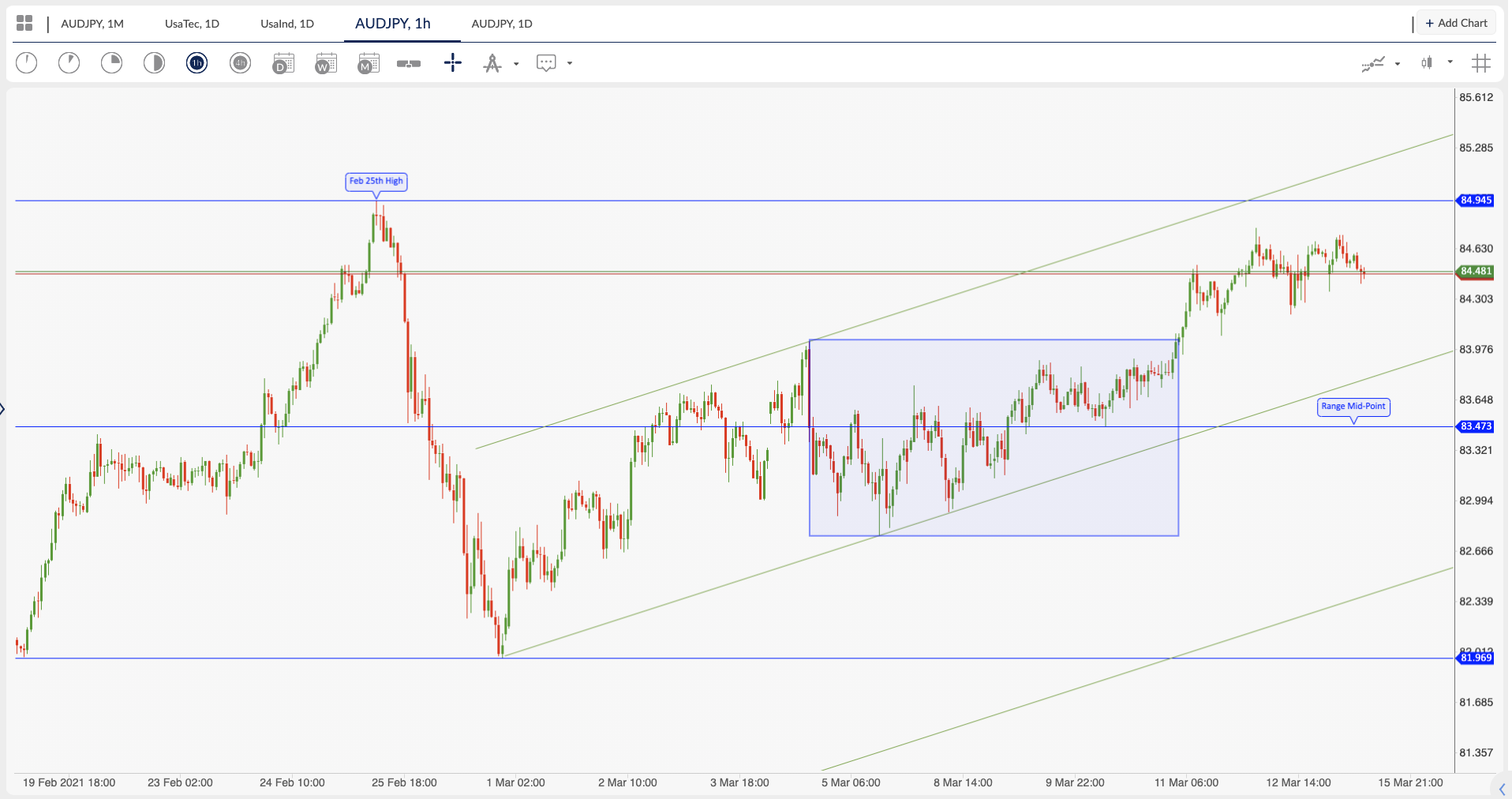

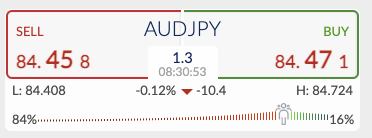

Using the Activtrader platform sentiment indicator, 84% of retail traders are bearish on the AUDJPY, so a contrarian trader would see this as a bullish opportunity to gain on the back of retail traders’ pain. All whilst price action looks ready to test the recent 25th February high of 84.945 on the H1 chart, which as previously mentioned would if broken, open up more high price levels to be tested on the higher time frames. If we are to rotate lower, the next intra-day significant low is 81.970 with the mid-price level of 83.50 a significant area of balance and should therefore prove quite difficult to get through should we test it?
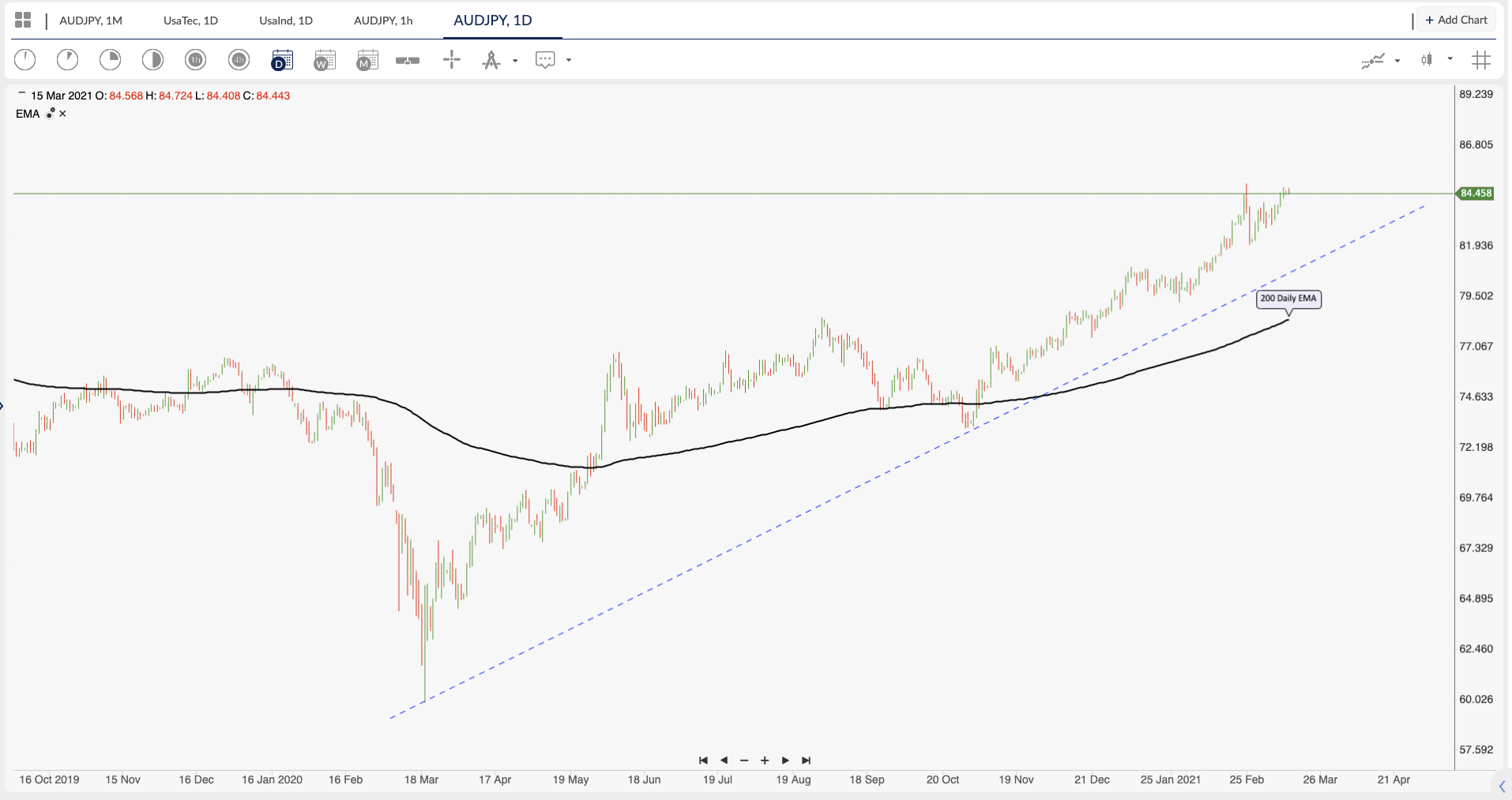

The AUDJPY does like to trend and looking at the current daily chart, it has been above the 200 ema for an extended period of time. The long-term moving average does act as a magnet and the price action historically shows that the currency pair likes to check in with the moving average on quite a regular basis. We are due a test of the 200 daily ema which could come from a global markets shock or maybe a period of prolonged sideways action in the currency pair. The intraday range described on the H1 chart will prove to be key as to the current trend direction, or any subsequent change in direction.




